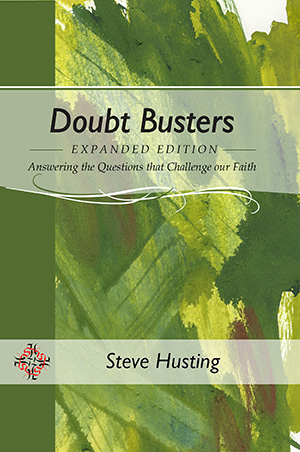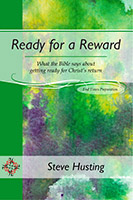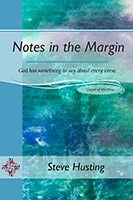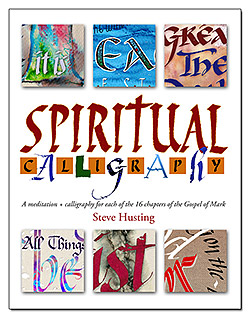The Lord healed a blind man on the Sabbath to reveal the spiritual blindness of others that we might believe in Him. The sign began with the philosophical question posed by the disciples when they saw a man born blind. “Rabbi, who sinned, this man or his parents, that he was born blind?” (John 9:1-2).
The significance of healing the blind man is found in Jesus’ answer: “Neither this man nor his parents sinned, but that the works of God should be revealed in him. I must work the works of Him who sent Me while it is day; the night is coming when no one can work. As long as I am in the world, I am the light of the world” (John 9:3-5).
This man was placed on earth so God could do a work in his life. This is true for every one of us. Jesus Christ is the one who does that work. Part of that work is revelation, which is the work of the light of the world. The work of revelation is to reveal Christ, especially Christ in us, the hope of glory. To paraphrase someone, the Old Testament is Christ concealed; the New Testament is Christ revealed. God is working in us, and it is shown when the light has shined and we know Jesus more and reveal Him by our lifestyles as those who are devoted to Him. We who are handicapped by sin are subjects of God’s work. He came to make the blind see who He is, the Christ, the Son of God who gives life in His name to those who believe (John 20:30-31).
Jesus put clay on the man’s eyes and told him to go to the pool of Siloam. Siloam is an area of Jerusalem in which a tower fell on eighteen men, killing them (Luke 13:4). Symbolically, he is going to the place of death. Jesus is the Potter who works the clay to repair what was broken (Jer. 18:4; Isa. 64:8). Out of the place of death He created new sight for the blind (John 9:7-8). People asked how he who was blind can now can see (John 9:8-10). He told them that he did what Jesus said and now he sees (John 9:11). He obeyed. The Father revealed. Eyes were opened.
I’m reminded of Jesus thanking the Father for revealing mysteries to children, then saying, “All things have been delivered to Me by My Father, and no one knows the Son except the Father. Nor does anyone know the Father except the Son, and the one to whom the Son wills to reveal Him” (Matt. 11:25-27). The next verses, familiar to many of us, explains how Jesus reveals Himself. “Take My yoke upon you and learn from Me, for I am gentle and lowly in heart, and you will find rest for your souls” (Matt. 11:28-30). Jesus reveals Himself to those who live the way He lived. The Son received direction from the Father and worked with the Father. So we surrender to Jesus, receive direction, and follow through on it. Did not Jesus teach this (John 14:21-23)? Along the way, He guides our steps and reveals more about Himself, especially of His relationship to the Father. Our relationship with the Son will be enriched as He reveals His communion with His Father.
The blind man took the yoke of Jesus, the yoke of faith and obedience, when he followed His directions. He came back seeing, and knowing that Jesus did it (John 9:11). The words of the man after his healing reveal how much light he received as a result of this healing. “If this Man were not from God, He could do nothing” (John 9:33). While the Pharisees were disturbed that the healing was done on a Sabbath day, which forbids such works, the blind man who sees recognized that God was at work (John 9:13-29). Though the Pharisees persisted in asking how it was done, they still could not receive the light, that God works outside their little boxes of religious rituals. They were asking the wrong questions, so they could not receive the light. They excommunicated the man (John 9:34), which meant he could no longer enter the temple grounds to worship God.
But he found something better. When the man could not come into the Jerusalem temple, then Jesus, the portable temple, went out to him and revealed Himself. He said to the man, “Do you believe in the Son of God?” (9:35-37). Then light shined with worship in spirit and in truth when he said, “ ‘Lord, I believe!’ And he worshiped Him” (John 9:38).
Siloam means “sent.” This sign of new life comes only because Jesus was sent to Jerusalem. Just as the deadly tower fell on the men (Luke 13:4), the wrath of God fell on Him who died for all. Jesus was “sent” from the Father for this very purpose, that the blind may see (John 9:39). Siloam also means “gushing forth,” no doubt because of the water that was used for ritual purification at the pool. The destruction of that pool symbolically opened up a new way for purification. The holy Father sent the Son, in whom is no darkness, to truly purify all who believe in Him. A spear was used to pierce Jesus’ side, and blood gushed forth to cleanse and heal the sin-blinded eyes of all who believe in Him.
No wonder “believe” appears in the gospel of John 98 times, depending on the translation. “This is the work of God, that you believe in Him whom He sent” (John 6:29).




